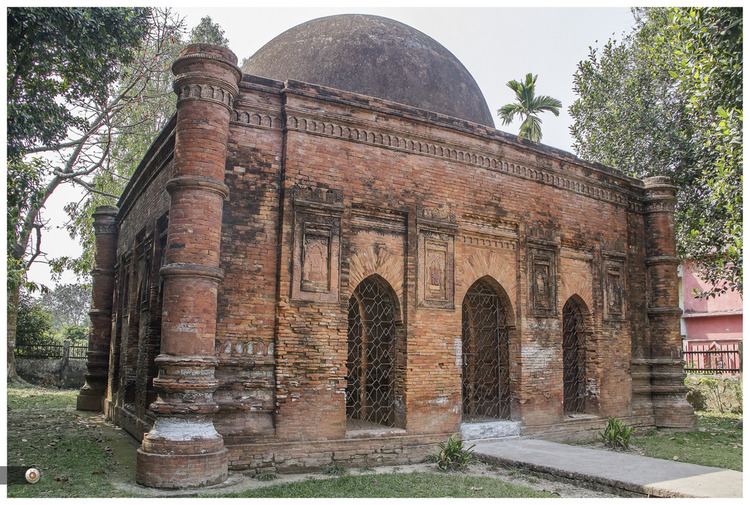Date established 1519 | ||
 | ||
Architectural style Pre-Mughal architecture Similar Binat Bibi Mosque, Kartalab Khan Mosque, Taltoli Jama Mosque, Momin Mosque, Nine Dome Mosque | ||
Historical goaldi mosque sonargaon narayanganj bangladesh
The Goaldi Mosque is one of the few surviving medieval monuments in Sonargaon Upazila, Bangladesh.
Contents
- Historical goaldi mosque sonargaon narayanganj bangladesh
- Goaldi mosque shonarga
- History
- Architectural features
- Present condition
- References
Goaldi mosque shonarga
History
Built in 1705 by Abdul Hamid during the reign of Mughal emperor Arunzeb, the graceful, single-domed Goaldi Mosque is the most impressive of the few extant monuments of the old capital city, and a good example of pre-Mughal architecture. There is another mosque near it which was built in 1519.
This mosque is one of the few remnants from the Sultanate period in Sonargaon, during the reign of Sultan Hussain Shah in 925 Hijri (1519AD). It was built by Mulla Hizabar Akbar Khan in the early 16th century, during the reign of Alauddin Husain Shah at a place called Goaldi - half a mile northeast of Panam village in Sonargaon. Sonargaon was the administrative center of medieval Muslim rulers of East Bengal. It became as the capital of Bengal during Isa Khan's ruling. The area falls under present-day Narayanganj District, Bangladesh. This mosque is more elegant and ornate in comparison to the earlier Sultanate mosques at Bagerhat.
Architectural features
The Goaldi mosque is a good example of the 'enclosed square type' mosque of Bengal that is distinguished by a cubical prayer chamber with corner towers and entrances on all sides except the qibla wall. A single dome caps the mosque; engaged ribbed turrets define the four corners; and the cornice is gently sloped. Circular corner towers are a deviation from the usual octagonal corner towers. This is the only example of circular corner towers in the Dhaka district. Accentuating the cornice is a row of small niches with floral motifs inside.
The east facade has three arched openings, embellished on either sides with rectangular panels of delicate relief work in the form of a niche with an ornamental hanging lamp motif. The north and south facades similarly display three arches, though only the center arch is open while the two side arches are blind.
The cubical prayer chamber measures 7.57 m and the walls are 2 m thick. The dome is carried on squinches that spring from the tops of stone pilasters, two on each wall. The qibla wall has three mihrabs. The use of black basalt for the central mihrab was a common practice during the sixteenth century. It is decorated with beautiful, intricate patterns composed of an ornamental hanging lamp motif. The two flanking mihrabs are decorated in similar fashion but instead of black basalt they are made of brick and fine terra cotta work. Lotus motifs are found carved in the spandrels and are closely related to the lotuses held by the Hindu god, Surya.
Present condition
The condition of mosque had deteriorated: with the exception of the qibla wall the entire mosque had collapsed, including the dome. Careful restoration was executed by the Department of Archaeology and Museums and this small graceful mosque is now restored to resemble its original design.
